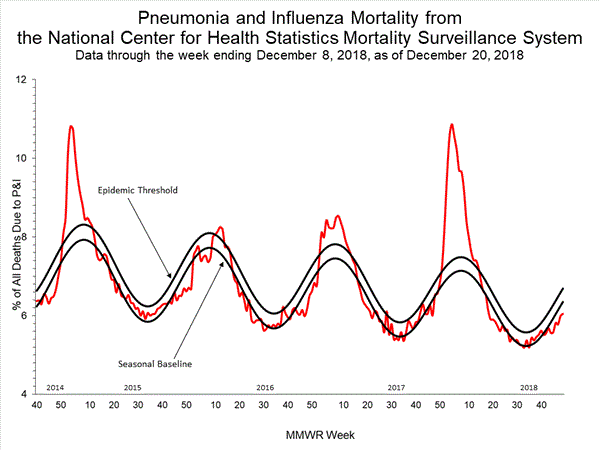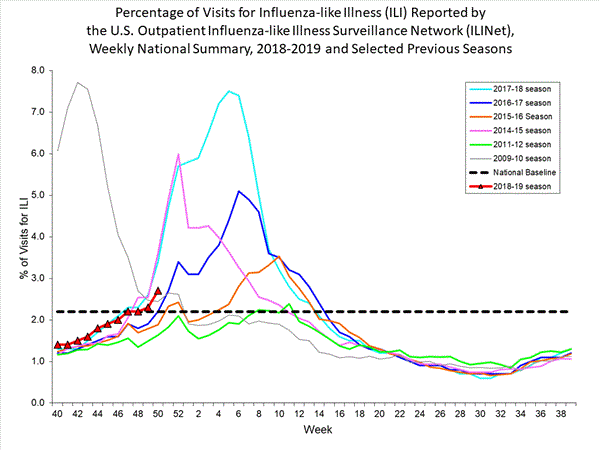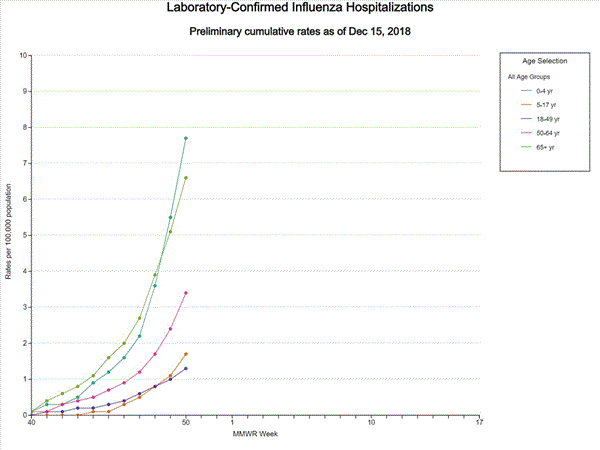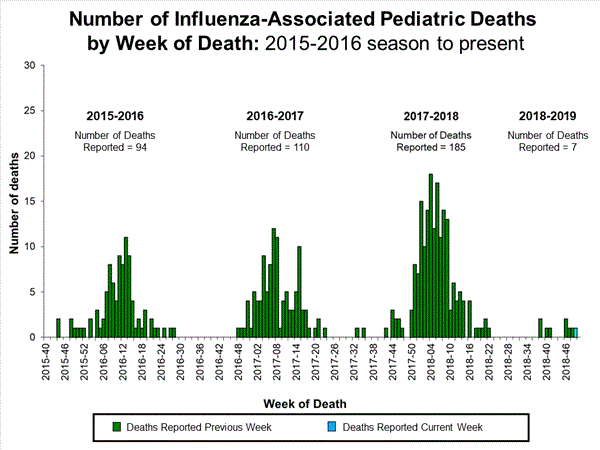2018-2019 Influenza Season Week 50 ending December 15, 2018
December 22nd, 2018Influenza activity in the United States is increasing. Influenza A(H1N1)pdm09, influenza A(H3N2), and influenza B viruses continue to co-circulate. Below is a summary of the key influenza indicators for the week ending December 15, 2018:
- Viral Surveillance: Influenza A viruses have predominated in the United States since the beginning of October. Influenza A(H1N1)pdm09 viruses are predominating in most areas of the country. However, in the most recent three weeks, influenza A(H3) viruses were most commonly reported in the southeastern United States (HHS Region 4). The percentage of respiratory specimens testing positive for influenza in clinical laboratories is increasing.
- Virus Characterization: The majority of influenza viruses characterized antigenically and genetically are similar to the cell-grown reference viruses representing the 2018–2019 Northern Hemisphere influenza vaccine viruses.
- Antiviral Resistance: All viruses tested show susceptibility to the neuraminidase inhibitors (oseltamivir, zanamivir, and peramivir).
- Influenza-like Illness Surveillance: The proportion of outpatient visits for influenza-like illness (ILI) increased to 2.7%, which is above the national baseline of 2.2%. Eight of 10 regions reported ILI at or above their region-specific baseline level.
- ILI State Activity Indictor Map: Two states experienced high ILI activity; New York City and nine states experienced moderate ILI activity; Puerto Rico and 11 states experienced low ILI activity; the District of Columbia and 28 states experienced minimal ILI activity.
- Geographic Spread of Influenza: The geographic spread of influenza in Guam and six states was reported as widespread; 18 states reported regional activity; 19 states reported local activity; and the District of Columbia, Puerto Rico, the U.S. Virgin Islands and seven states reported sporadic activity.
- Influenza-associated Hospitalizations A cumulative rate of 2.9 laboratory-confirmed influenza-associated hospitalizations per 100,000 population was reported. The highest hospitalization rate is among children younger than 5 years (7.7 hospitalizations per 100,000 population).
- Pneumonia and Influenza Mortality: The proportion of deaths attributed to pneumonia and influenza (P&I) was below the system-specific epidemic threshold in the National Center for Health Statistics (NCHS) Mortality Surveillance System.
- Influenza-associated Pediatric Deaths: One influenza-associated pediatric death was reported to CDC during week 50.





